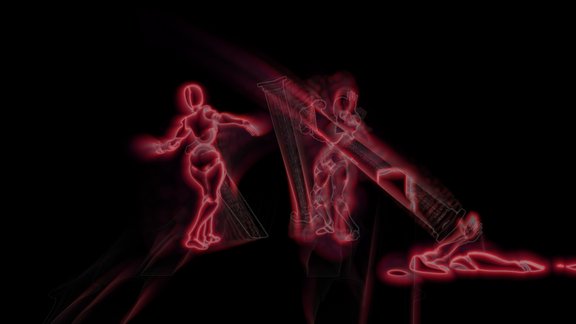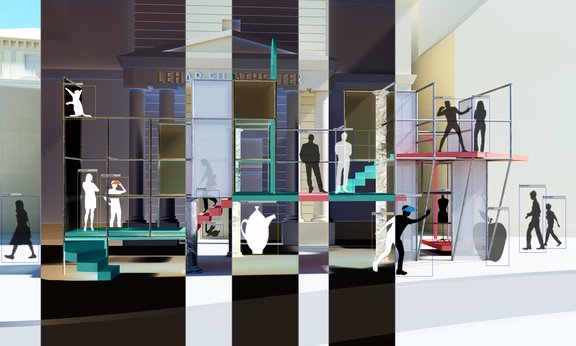Historical elements interacting with digital technologies: In the former royal Lehar theatre in Bad Ischl students and researchers from Studio 2 at the Faculty of Architecture and artists are combining the analog with the digital world. The once famous Lehar Theatre is on the verge of decay and is currently no longer in use. As part of this year's Ars Electronica Festival, "Theatrics of Interspace" is reviving the building, which is already in danger of collapsing, with the help of digital methods. For this purpose, the project, conceived and implemented by architects and artists, was selected as a "garden": In addition to the festival on-site in Linz, so-called "Ars Electronica Gardens" are taking place simultaneously at several venues around the globe, addressing numerous aspects of digital issues and also allowing the public to experience them online and on-site. The master's semester studio project at the Faculty of Architecture, led by Clemens Plank and Anirudhan Iyengar, resulted in seven projects ranging from interactive virtual reality environments to digital sculptures that fit into the rich cultural heritage of the theatre in Bad Ischl.
"At the center of our approach was the subject-object relationship: how does an object communicate with its environment, what emotions does it trigger in people? Our Ars Electronica Garden negotiates the concept of the space between subject and object, between real and virtual," explains architect Clemens Plank.
For this purpose, architecture students created installations that change depending on the people in the space and interact or react to actions. For example, parts of the theatre building were collaged into an installation that interacts with the visitors, or a digital sculpture reacts to the facial expressions of people in the theatre. "What all the works have in common is that they enter into dialogue with people - both on-site and online in our Mozilla Hub, which is accessible to everyone," adds Anirudhan Iyengar. The architect is working on his dissertation as part of the project at the Lehar Theatre and has created a new concept for the possible design of the forecourt. "The multifunctional approach is based on a framework structure that provides space for a variety of activities. The concept relates to the spatial conditions of the square and aims to create a dialogue not only with the theatre itself but also with the surrounding movement and open spaces," adds Iyengar.

Credit: Steven Mark Kübler
Digital symbiosis
"We are very happy to host these exciting projects by students and strengthen our efforts to revitalize such an important theatre in the burning glass of the international radiance of the ARS Electronica Festival," says actress Gioia Osthoff. Gioia Osthoff, Michaela Putz, and Felix Dennhardt have been developing and curating the Artist in Residency program AUF! AUF! since June 2021. During this, artists from various disciplines discover and perform in the theatre, including its glass annex. Here, the Salzburg artists' collective Gruppe 19 will showcase the results of the residency "fresh from the oven".
In the context of the Ars Electronica Gardens, the digital artworks are not in competition with the Lehar Theatre but are to be understood as a symbiosis: To use technology to breathe life back into the theatre and to highlight the rich cultural heritage of the 194-year-old site. The garden aims to draw attention to the theatre and celebrate its cultural significance. "We hope that our project will raise awareness towards the theater and much-needed push to renovate and hopefully restore it to its former glory as part of the Bad Ischl 2024 Capital of Culture," Plank and Iyengar stress.
"Theatrics of interspace" consists of works by master’s students from the Faculty of Architecture at the University of Innsbruck and & the Artist in Residence initiative of AUF! AUF!
Students: Steven Mark Kübler, Matthias Holzmann, Sara Schlierenzauer, Valentin Goham, Linus Birkendahl, Bernd Baumgartner, Daniel Kreuzsaler.
Lecturers: Anirudhan Iyengar, Clemens Plank & Judith Prossliner.

